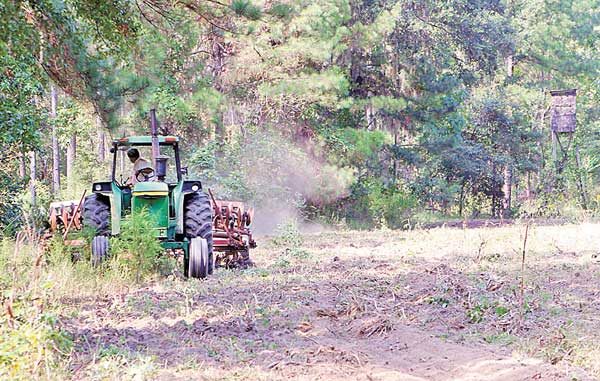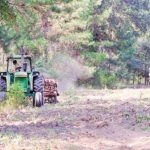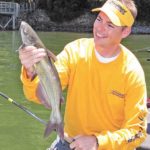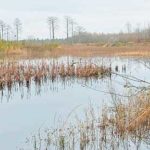
By the first week of May, the danger of a killer frost is improbable, and any planned summer food plots should be well underway. Unfortunately, many part-time land managers/hunters do not sow the first seed until May. Preparing, planting, and maintaining food plots usually is not most hunters’ primary occupation. April also falls in the middle of the spring turkey season in North Carolina and South Carolina. Broadcasting seed throughout a freshly-tilled food plot after a spending a morning chasing a gobbler may not sit well with your local game warden during the afternoon hunt.
For whatever reason, many summer food plots just do not get planted when they should during April. Even though April is more ideal for most summer food-plot plantings, early May falls within the planting window for cranking out most warm-season food plots. Single crop or seed mixes containing corn, soybean, peanut, and clover should be planted no later than May 20 to be effective as a summer food source for deer and other wildlife. Chufa, milo, peas, and joint vetch can be planted as late as June and July, but will serve as more of a late-summer and early-fall food source. Later plantings tend to struggle with aggressive weed species.
Watch out for fawns
The springtime is a refreshing time of year for all of the flora and fauna. In fact, the state’s No. 1-ranked game species, the whitetail deer, rejuvenates its population count by gaining 35 to 40 percent each spring. New fawns make up a hefty portion of the overall population. If all other population factors are equal, a harvest rate of 35 to 40 percent will retain a stable population of deer. However, if harvest rates decrease, the growth rate will be much greater, with more does available to give birth and vice-versa. Although other factors play a role, growth rates in any population of animals are directly controlled by mortality. The springtime fawn emergence is a critical period for maintaining your deer herd
State wildlife agencies in both North Carolina and South Carolina point to April through June as the primary birthing period for fawns. Farmers, outdoorsmen, and other people roaming through the woods should keep a look out for them during the spring and early summer and should stay clear, offering extra protection and caution. Nature equips fawns with a reduced scent and a protective color palate during their first few weeks of life. Even though fawns may appear to be abandoned, their mothers are staying clear of their newborns to keep from attracting predators. During the first few weeks after birth, the fawn’s defense mechanism is to lay motionless within the cover of their surroundings. Fawns should not be disturbed whatsoever during the birthing period.
Unnatural fawn mortality comes from several sources. Domestic dog attacks and routine farm mowing rate among the highest causes of spring fawn mortality. Does usually select abandoned fields, cutovers, or old home sites covered with waist-high shrubs and grasses near food and water sources with little disturbance. Discing, burning, and mowing practices are discouraged in these areas from April through June to prevent harm to new fawns. In addition, refrain from training dogs in these areas as well.
Want to grow bigger fish?
Techniques used to grow big fish and big juicy tomatoes are quite similar. Controlling the nutrient flow within a pond from the ground level is the first place to increase productivity. Although most of the desired fish, such as big bass and catfish, are at the top of the food chain, they require the subordinate groups to flourish first. Fertilization is the easiest way to increase the productivity of a pond, but too much is devastating.
During the summer, nutrient-rich ponds promote algal blooms or the growth of microscopic plants called phytoplankton. The phytoplankton is consumed by zooplankton, which are later eaten by insects and small fish. As the food chain progresses, sunfish and larger predators get their share.
Warm conditions in spring and summer are required for algal blooms to flourish and fuel the food chain. Most farm ponds lack a sufficient nutrient flow to produce the maximum pounds of fish. Proper fertilization should grow 300 to 400 pounds of fish per acre each year, versus 100 pounds of fish in an unfertilized pond.
Spring is the best time to start fertilizing, which should continue routinely until the end of the growing season. Light should not penetrate more than 18 to 24 inches in properly fertilized ponds. Starting early, especially in early May, also decreases light penetration and prevents noxious weeds from taking root and covering the pond.
As the water clears and visibility increases beyond this measurement, a new treatment is necessary. Ponds should respond to fertilization 10 to 14 days after treatment; however, if a satisfactory bloom does not occur, the pond water may have a hardness issue and an application of lime may be needed.
Do not over-fertilize! Make sure the visibility is at least 12 inches from the surface. If less than 12 inches, the population of phytoplankton is too great, which will result in fish kills. The same phytoplankton that produce oxygen during the day consume massive amounts of oxygen at night. During extended periods of hot and cloudy weather, reduce fertilization to prevent a disastrous fish kill.
Liquid fertilizer should be diluted and spread over the pond surface. Granular fertilizer should be broadcast in shallow areas throughout the pond. Phosphorus is the limiting nutrient in fish ponds, and fertilizers high in phosphorus should be used. Many commercial fertilizer companies have developed specialized fish-pond products perfect for maintaining the nutrient budget in fish ponds. Choose water soluble granular or liquid products with nutrient ratios resembling 10-52-4 or 10-34-0.
Don’t drain duck ponds yet
By May, migrating waterfowl have reached their lush, summer breeding grounds in the northern region of the continent and are thousands of miles away from the carefully-managed duck impoundments scattered throughout the state. Unless corn is the primary forage crop to be planted (plant it in April and May), the planting window is still a month away for millet, milo, and rice. Retain the flooded nature of the pond for a few more weeks to prevent noxious weeds from taking over before planting time. Leaving impoundments flooded also allows newly-hatched wood ducklings an available food source and training ground during their first few weeks of life.








Be the first to comment